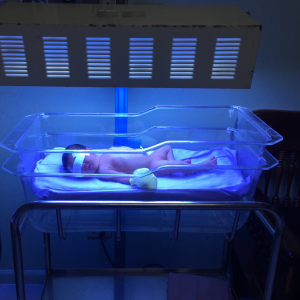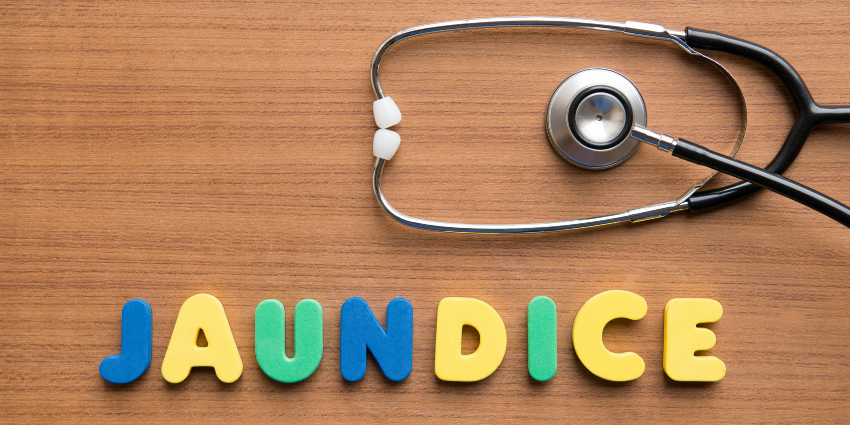Types of Jaundice in Children
What is Jaundice?
- Jaundice is a common sign or symptom of a child with liver disease.
- Jaundice is not a disease but a condition that results from increased bilirubin in blood.
(Bilirubin is a yellow by-product which is produced from breakdown of red blood cells)
- Jaundice is a manifestation causing yellowish discoloration of eyes, skin, dark color urine.
 When to consult a Gastroenterologist/ Hepatologist?
When to consult a Gastroenterologist/ Hepatologist?
- Jaundice, which persists after two weeks in term new born babies and three weeks in preterm babies, is pathological and requires further investigation.
- Few liver diseases are rapidly progressive to liver failure so consult a Peadiatric Gastroenterologist or Hepatologist immediately with appearance of jaundice.
Why newborn babies get Jaundice?
- Newborn babies are born with high hemoglobin (16 to 18 gms/dl) due to low oxygen in mothers’ blood.
- After birth due to exposure of normal oxygenated air, there is increased destruction of red blood cells so that the haemoglobin comes down to normal value & this destruction causes jaundice in newborn babies.
What is physiological jaundice and cholestatic jaundice in newborn?
↣ Physiological jaundice is a common presentation of jaundice in 60% newborn babies at birth, which usually peaks 3 days after birth and lasts 3-5 days & will have clinically resolved by 14 days of age (upto 21 days in preterm babies).
- It can also occur due to breastfeeding, where proteins from breast milk block the breakdown of bilirubin. However, breastfeeding is not discarded for this reason.
- In case of high bilirubin (unconjugated) phototherapy is required, sometimes blood exchange transfusion is needed.
↣Cholestatic jaundice in newborn: This is a different type of jaundice due to liver disease (Not due to excessive red blood cell breakdown or immature liver).
- Jaundice, which persists after two weeks in term babies and three weeks in preterm babies, is pathological and requires further investigation and should be referred to pediatric gastroenterologist immediately for further assessment.
- There are various causes for prolonged jaundice apart from blood group incompatibility, structural and metabolic disorders or hereditary disorders can also present in neonatal period.
- The course of treatment can be decided after finding the cause of prolonged jaundice. In some cases, liver transplants may also be necessary.
 How to differentiate cholestatic or pathological jaundice from physiological jaundice?
How to differentiate cholestatic or pathological jaundice from physiological jaundice?
- It can be differentiated by performing total & split bilirubin [direct (conjugated) & indirect (unconjugated) bilirubin].
- All cholestatic jaundice has to be thoroughly investigated as it always indicates underlying liver disease.
What You Should Know About Jaundice Management?
- Any baby can get jaundice, but severe jaundice, if it is not treated can cause irreversible or permanent brain damage.
- Your baby should be checked for jaundice in the hospital and investigations to be done if pathological jaundice is present.
- Best way is to monitor blood bilirubin level to clarify for physiological vs. pathological jaundice.

